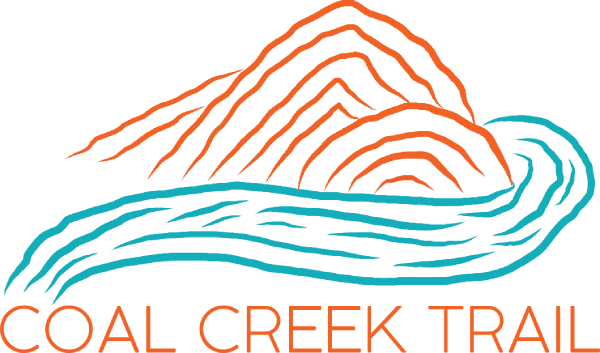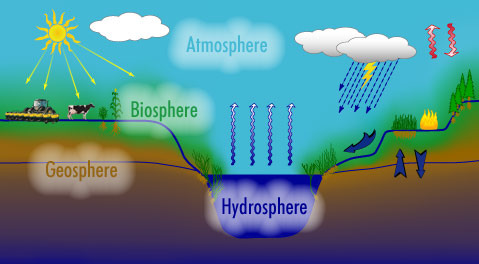North vs. South - Coal Creek Trail

Take a moment to compare the north side of the canyon with the south side. What are some of the similarities and differences that you see?
Key Similarities:
- Steep slopes
- Same rock layers
Believe it or not, this canyon has not always been here. In fact, on the geologic time scale, Cedar Canyon is a relatively recent geologic feature. The canyon has been carved by erosion from Coal Creek itself. During heavy rainfall or spring runoff, the water flows at a fast enough rate that it can move a lot of material downstream into Cedar Valley. This has allowed the canyon to carve deeper and deeper into the existing rock material to make the canyon and leave behind the steep slopes on each side of the canyon. The layers you find on either side of the canyon used to connect together and have been removed by the flowing river.
Key Differences:
- More vegetation on the south side of the canyon
- Less rock exposures on the south side
- Different weathering patterns
Even though each of the canyon slopes are located only 500-600 feet apart, the orientation of these slopes lead to slightly different climates existing on the north and south sides. Since we live in the northern hemisphere of Earth we do not get direct sunlight like areas along the equator. This effect causes the sun to be lower in the sky (to the south) throughout most of the year. This means that the north side of the canyon with the south-facing slope receives more direct sunlight while the south side of the canyon with the north-facing slope will have more shade. More shade on the south side leads to slower rates of evaporation and snow melting. This gives vegetation more abundant water allowing more plants to grow on the south side of the canyon.

Earth Systems:
Earth itself can be divided into various systems. These include the atmosphere (air), biosphere (living things), hydrosphere (water), and geosphere (rock). Each of these systems are deeply interconnected. The differences between the north and south sides of the canyon illustrate how an increase in vegetation can lead to rock breakdown and soil formation. Can you find other examples of how a change in one Earth system can lead to a change in another?
Educator Resources
Educators can download resources for teaching on the Coal Creek Trail.



